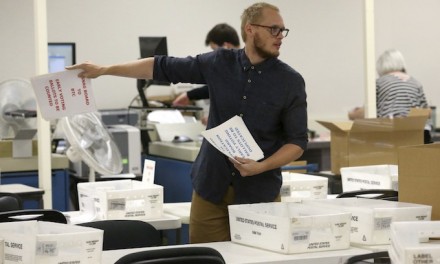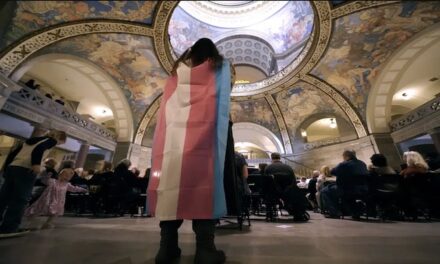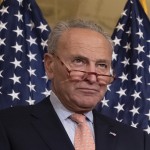As a candidate and then mayor, Lori Lightfoot has spoken often of her ambition to fully reinvent Chicago’s approach to combating its stubborn violence problem.
Key to those plans are anti-violence organizations, including those that intervene in disputes or toss lifelines to people likely to kill or die. She said last year that those outreach groups were “fundamentally critical to what we’re doing,” as she seeks to treat violence as a public health crisis.
“We will make sure they have the resources they need to be successful,” she said.
More than 16 months into her term, however, Lightfoot’s plan to fundamentally change Chicago’s approach by relying on those groups has not developed. The administration’s spending on them is a vanishingly small part of this year’s budget, and anti-violence advocates have criticized her relatively modest funding of those initiatives during one of the bloodiest years in recent history.
The administration has touted its $11.5 million in spending this year on conflict intervention, counseling and employment help for people at risk, as well as services for victims and funding for the city’s public safety office.
City Hall officials have described those initiatives as focusing on the city’s most violent neighborhoods. And Lightfoot has said repeatedly she is turning away from the strategy of past mayors, which she has described as using only the police to stop violence.
But her attempt to shift to a different path has been incremental at best. The city’s spending for these alternate approaches to violence is less than 1% of the city’s share of the Police Department budget this year — which is about $1.7 billion. In June alone, the city spent more than four times as much on police overtime.
Two weeks ago, the mayor committed to leaning more on groups other than the police in a sweeping report on her plans to suppress bloodshed. That’s a vision for the future, but the present day finds Lightfoot in a familiar position for a Chicago mayor — mostly using police to try to turn around a violent year. The city is on pace for more than 750 homicides, which would make it one of the worst years of the last quarter-century.
Pressure has built to change public safety spending, as activists incensed by police brutality have demanded that Lightfoot give less money to cops and more to services that could address the root causes of violence. And leaders of anti-violence groups and some aldermen have called for the city to route more money to nonprofit initiatives. Anti-violence advocates have asked for $50 million a year but said that even that wouldn’t match up to the scope of the problem.
That push for more money is working against stiff fiscal headwinds, as the city faces a $1.2 billion budget gap, brought on by the economic effects of the coronavirus pandemic.
Meanwhile, even the city’s current funding for the groups has spurred skepticism from some aldermen who worry organizations aren’t held accountable for results, and the anti-violence efforts underway generally remain unproven, without clear evidence they can stop bloodshed in the long term.
Leaders of anti-violence organizations — which have often looked to philanthropy for funding — said the city and other governments will need to step up soon to fund nonprofit efforts if they’re going to have a serious long-term impact.
“If we as a city committed to doing this, we could be in a very different place, not overnight but in a couple years,” said Arne Duncan, a former U.S. secretary of education who now runs an anti-violence group. “We gotta commit to doing this.”
Asked whether the city is spending enough on the groups, Susan Lee, deputy mayor for public safety, provided no firm answer, pointing to the city’s budgetary predicament and suggesting other potential sources of money. She told the Tribune the price tag of addressing Chicago’s violence is “something that the entire city and the entire region really has to contemplate together.”
“It’s not just the city. It’s also the county, it’s also the state, it’s also philanthropy and corporate sector,” she said.
Plans, but little funding
In a position paper issued during her campaign, Lightfoot criticized Mayor Rahm Emanuel for lacking “a real, comprehensive plan to make a sustainable reduction in the violence.” As mayor, her oft-repeated goal has been to make Chicago the safest big city in the country.
2020 has not gone according to plan. Through Friday, Chicago had suffered 604 homicides, a 51% jump from the same time last year, police statistics show.
Lightfoot — a former chair of the Chicago Police Board — has responded by taking a hands-on tack with her police brass. She has held weekly accountability sessions with police leaders and sometimes sent stinging messages about their performance, leaving no question that she’s paying close attention.
While policing dominates the conversation about stopping violence, Lightfoot has also promoted her commitment to alternate approaches. Late last month, she put out a 103-page “Comprehensive Plan to Reduce Violence in Chicago.” Anti-violence groups figure prominently in the plan, and one of the long-term goals is to “expand investments in violence prevention services.”
City Hall officials have said they put $11.5 million this year into “community-based public safety” efforts focused on Chicago’s most violent neighborhoods. More than half that went to Metropolitan Family Services, a nonprofit organization that got $6 million to fund and coordinate the efforts of 11 groups performing street outreach on the South and West Sides.
But not all of the $11.5 million is going to such organizations. The figure also includes $1.1 million budgeted this year to expand the city’s public safety office, which is tasked with coordinating anti-violence efforts.
The city has also put money from state and federal sources toward programs that have some anti-violence role.
The question of what counts as anti-violence funding also is open to interpretation, and budget documents don’t clearly spell out what money is going toward stopping bloodshed. The city, for example, has long funded after-school and jobs programs that could be seen as working against violence, though the Lightfoot administration did not count that outlay as part of the $11.5 million.
Still, City Hall officials have touted the 2020 spending as an increase, particularly for anti-violence street outreach programs. This year, the city spent $7.5 million on those programs, including the $6 million that went to Metropolitan Family Services. Figures compiled by the city show that in 2019 the Emanuel administration put $1.5 million toward similar efforts, which the Lightfoot administration continued.
The question of how to spend tax dollars on public safety has been front-and-center nationally in the four months since George Floyd died under the knee of a Minneapolis police officer, spurring protests nationwide centered on calls to “defund the police.” In Chicago, those calls are rooted in the Police Department’s long history of abuse and misconduct against African Americans.
Lightfoot has rejected calls to substantially reduce police funding. Neither she nor other City Hall officials have said exactly how much money they envision going to anti-violence groups in 2021.
Other cities have made longer-standing commitments to alternate approaches to violence.
For more than a decade, Los Angeles has partnered with community groups involved in its anti-gang program. That city– which has had roughly 350 fewer homicides than Chicago this year — committed $25.9 million in this budget to community organizations, as well as data and research contractors involved in that effort, a city spokeswoman said.
Lee, the deputy mayor who previously did anti-violence work in Los Angeles, objected to comparing the cities’ spending, as their initiatives differ in the work they fund. But she acknowledged that Los Angeles and New York City have “been on this path of doing a coordinated citywide comprehensive approach for much longer than Chicago.”
Beyond funding questions, leadership on the issue is in flux. City Hall announced Lee’s resignation earlier this month, two days after Lightfoot’s anti-violence plan came out and after Lee had been on a job a little more than a year. It is unclear who will take her place when she leaves this month, and her resignation emerged the same week as the announced retirement of the deputy police superintendent tasked with leading reforms to the troubled Police Department.
While Chicago is turning to anti-violence organizations, it is not funding the best-known effort of that kind in the city’s recent history: Cure Violence, formerly known as CeaseFire.
Researchers credited CeaseFire — which used ex-gang members interrupt conflicts — with reducing violence, and the program was the subject of the acclaimed 2011 documentary “The Interrupters.” But police voiced distrust of a program that relied on people with gang ties and criminal pasts, and in 2007 the state auditor criticized its financial practices.
Still, in 2012 the Emanuel administration responded to a surge in violence by forging a one-year $1 million contractwith the group. But the deal was not renewed. The program has only one site in Chicago, on the South Side, which is supported by philanthropy, said CEO Dr. Gary Slutkin. Though it is headquartered in Chicago, the program operates more extensively in other cities.
While the group has a limited presence on Chicago’s streets, some people once connected with the organization now work with other local anti-violence initiatives.
Getting started anyway
Even with limited government funding — and amid a pandemic that has forced some in-person activities online — the work goes on.
Late last month, job coach Christian Cambray sat before a webcam in a classroom and led a cognitive behavior therapy session for about half a dozen men enrolled in Rapid Employment and Development Initiative, or READI. The program, supported by philanthropy, combines therapy with job training and placement. Cambray was trying to help the men regulate their emotions — to calm down when angry or find peace amid a traumatic flashback.
Cambray demonstrated, breathing deeply and suggesting the men count backward. He asked one participant to call forth “pleasant imagery and visualization.” The man said he saw himself in Mexico at his father’s ranch, hearing roosters and smelling tortillas.
The participant said, “I feel calm, relaxed.”
READI, like other programs, serves men with troubled pasts and criminal records who might struggle to finish school or find work. Participant Jamel Fields, for example, said he was expelled from school in eighth grade for bringing a gun, and he’s done prison time for armed robbery. He spent six months in isolation, he said. Counseling has helped him deal with the trauma, he said.
“I still have nightmares from prison,” he said.
Fields is currently working on a GED diploma, and hopes to find a job in welding or construction.
Researchers are still studying the program’s effectiveness but a preliminary evaluation over 20 months showed that men who participated in some part of the program were nearly 40% less likely to be shot or killed than men at similarly high risk for violence, according to the group.
READI, whose main operations are not city-funded, is one program supported by donors who met in 2016 to discuss their options as shootings spiked. As a result, about 50 donors and private foundations in the past four years has raised about $90 million to study and fund violence prevention, some of those involved said. The idea was to get the initiatives off the ground, study their impact and hand off promising programs to the city to fund and coordinate.
The heads of major foundations told the Tribune they know the budget crunch means they can’t hand off their efforts this year. John Palfrey, president of the MacArthur Foundation, said the city was “radically underfunded in this aspect of public safety compared to other cities when the mayor took over” and would likely need more time to build up enough funding.
“The work shows promise but it’s not where it needs to be and also given the financial situation of the city, the municipal support isn’t there yet for this work,” he said. “So we’re hanging in there.”
There is promise in nonprofit groups taking on street violence, academics told the Tribune. However, there is little quality research on the long-term impact of specific efforts because they have rarely been sustained over time and evaluated rigorously, those researchers said.
Still, some evidence supports nonprofit solutions to violence. For example, a 2017 study in the journal American Sociological Review found that every 10 additional organizations “focusing on crime and community life” in cities of more than 100,000 people across the country led to a 9% reduction in the murder rate from 1990 to 2013.
Robert Sampson, a Harvard University social sciences professor who has studied crime in Chicago, called for city governments to “trust the residents more.” He noted news reports that the founder of South Side anti-violence group Mothers/Men Against Senseless Killings had warned police in advance of potential violence at a funeral in July. The department posted cops nearby but 15 people were shot anyway.
“The residents in communities are very sharp and know what’s going on,” Sampson said.
The future of anti-violence groups
Some aldermen have called for more funding for anti-violence groups — along with scrutiny of city spending in that area.
Three aldermen last year introduced an ordinance that would create a city department to prevent gun violence. It would receive at least $50 million yearly and work with groups in the most violent neighborhoods.
That ordinance has not gone anywhere at the council thus far.
Ald. Chris Taliaferro, 29th, a former police officer and Lightfoot ally who co-sponsored the ordinance, said he hopes the city can find savings in other areas and give more money to well-chosen anti-violence groups.
“Unless we commit more funding to it, I don’t think it’s gonna be as effective as it should be,” he said. “I think putting the responsibility completely on our police department is not going to get us very far.”
Even so, Taliaferro has also introduced a resolution that would call for hearings before the public safety committee he chairs on the money the city has handed out for violence prevention. Taliaferro said he is concerned the groups that have taken in the money are not being held accountable for results.
Leaders of anti-violence groups, meanwhile, continue to press the city. Some also have called for an annual pledge of $50 million. Eddie Bocanegra, executive director of READI and a former gang member who served time in prison for murder, said even that amount “barely scratches the surface” of the deep need.
He asked how the Lightfoot administration plans to change its approach.
“I think people are curious to know what is the strategy in the mayor’s office beyond putting more police officers on the ground?” Bocanegra said.
It is unclear how Lightfoot might try to simultaneously address two of the city’s most daunting problems: violence and a fiscal shortfall. The scope of her ambition for public safety in Chicago is clear.
“Violence has touched so many of our communities, and when any one of them is unsafe, our entire city is unsafe,” Lightfoot wrote in the introduction to her plan to reduce violence. “Since my first day in office, I have been determined to change that reality.”
She has yet to show whether she can build the political momentum needed to enact and fund that vision in the years to come.
___
(c)2020 the Chicago Tribune
Visit the Chicago Tribune at www.chicagotribune.com
Distributed by Tribune Content Agency, LLC.
—-
This content is published through a licensing agreement with Acquire Media using its NewsEdge technology.


















Recent Comments